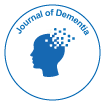Delirium: Its Precipitating Factors in the Elderly
Received: 07-Aug-2017 / Accepted Date: 08-Aug-2017 / Published Date: 16-Aug-2017
Keywords: Delirium; Dementia; Confusion; QSEN; AHRQ
Introduction
According to the American Geriatrics Society and Inouye [1] post-operative delirium has become the most common surgical complication in older adults. Older adults are classified as 65 years of age and older. Statistics show delirium occurs in 5% to 50% of older adults post-operatively. In the United States alone, delirium costs have been estimated at $150 billion annually. It is important for health care providers to recognize that 40% of these cases are preventable and would benefit from quality improvement measures. By utilizing the AHRQ National Clearing House Guidelines [2] for the geriatric population and the Quality and Safety Education in Nursing’s [3] six core competencies, health care providers can recognize key factors in assessing and preventing delirium from exacerbating in the clinical setting.
Delirium Vs. Dementia
According to the American Psychiatric Association [4-6], delirium is an acute condition with fluctuations in cognition manifesting in multiple ways. One may see alterations in language and its perception, or varying levels of memory impairment. The client may show signs of confusion as seen in a decreased awareness of one’s surroundings. Differences in delirium and dementia are as follows: Delirium is recognized as an acute condition; whereas, dementia is demonstrated as a progressive, chronic state often seen in the Alzheimer’s patient where the activities of daily living may be impaired depending on its level of progression. The multifactorial precursors of delirium make it necessary to complete a full assessment.
AHRQ guidelines
According to the AHRQ [2] “Guidelines Summary for Delirium”, delirium can be precipitated by a variety of factors and need to be assessed according to the Hartford Institute for Geriatric Nursing guidelines. The following key elements should be assessed.
• Cognitive impairment
• Medications
• Pain
• Metabolic disturbances, such as hypoglycemia, hypercalcemia, hyponatremia, hypokalemia)
• Hypo-perfusion/hypoxemia, such as seen in fluctuations in blood pressure, capillary refill, pulse oxygen saturation [SpO2]
• Dehydration with changes in sodium [Na+], blood urea nitrogen/creatinine ratio [BUN/Cr] levels
• Infection and fever with changes in white blood cells [WBCs] with differential, and cultures
• Environmental factors often seen in sensory overload, deprivation, or restraints
• Impaired mobility
• Sensory impairment as seen in vision and hearing deficits.
Conclusion
According to Herlot et al. prevalence of delirium is associated with the diagnostic methods used. Underreporting of the condition can result in increased morbidity and mortality in the clinical setting. It is important for education sessions to be made available to health care providers to better equip providers with tools to prevent exacerbations. The National Guideline Clearinghouse has summaries available for best practices and protocols related to the geriatric population. The Quality and Safety Education in Nursing’s (QSEN) six core competencies recognize the values in patient-centered care, so health care providers can exercise safety measures and evidence based practices through teamwork and collaboration with other interdisciplinary members to promote positive patient care outcomes. The interdisciplinary team can collaborate when utilizing the informatics systems to process data to promote quality improvement projects and studies to better assist the health care provider in their assessment of the older adult.
References
Citation: Zanetos J (2017) Delirium: Its Precipitating Factors in the Elderly. J Dement 1: e103.
Copyright: © 2017 Zanetos J. This is an open-access article distributed under the terms of the Creative Commons Attribution License, which permits unrestricted use, distribution, and reproduction in any medium, provided the original author and source are credited.
Share This Article
Recommended Conferences
Toronto, Canada
Toronto, Canada
Recommended Journals
黑料网 Journals
Article Usage
- Total views: 3733
- [From(publication date): 0-2017 - Nov 20, 2024]
- Breakdown by view type
- HTML page views: 2975
- PDF downloads: 758
